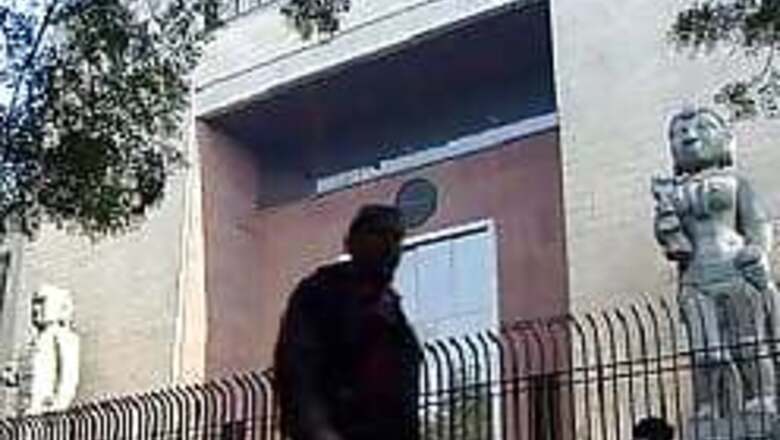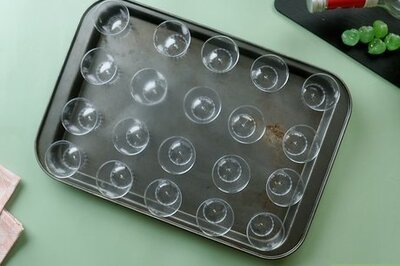
views
Mumbai: Striving to keep inflation under check amid pressure from surging global oil prices and food prices, Reserve Bank of India on Tuesday hiked key short term interest rates by 0.25 per cent.
The move can lead to increase in interest rates of housing and other consumer loans.
Unveiling the first quarterly review of the 2006-07 Monetary Policy, RBI Governor Y V Reddy said that the overall stance of the policy was to consider appropriate measures "to the evolving global and domestic circumstances impinging on inflation expectations and growth momentum".
Within an hour of the announcement, LIC Housing Finance and ICICI Bank said they would increase their housing and auto loan rates.
While raising the repo and reverse repo (RBI's short term lending and borrowing rates) by 0.25 per cent to 7 and 6 per cent respectively, the apex bank kept the cash reserve ratio and bank rate unchanged, a move that may keep the lending rates to industry stable.
Although RBI kept its projects for economic growth unchanged at 7.5 to 8 per cent and inflation at 5 to 5.5 per cent for the current financial year, Reddy expressed concern over the rising global crude prices, which have increased import dependent India's crude basket from $60.1 a barrel in January-March, 2006 to $67.3 in April-June and further to $71.4 in July.
Terming fuel prices as "major risk to headline inflation", the Governor said in his statement that though domestic prices of petrol and diesel were increased by 9 and 6.5 per cent respectively in June, "international crude oil prices continue to be volatile and rising."
Expressing concern at rising food prices, Reddy said there has been a reversal of the phenomenon of consumer prices lagging wholesale prices during the current fiscal so far, which indicates a sharp increase in food prices.
Food articles constitute a relatively larger share in the consumer price basket.
Inflation based on the consumer price index for agricultural labourers and rural labourers increased to 7.2 per cent each in June, 2006 from 2.7 per cent each a year ago, the RBI Governor pointed.
The rise was quite phenomenal compared to WPI inflation which stood at 4.3 per cent on an annual average basis against 6.3 per cent a year ago.
In fact, the increase of 4.2 per cent in prices of food articles accounted for nearly 14 per cent of the year-on-year headline inflation, he said, adding the main drivers of the inflation in the food articles segment were milk, pulses and wheat.
PAGE_BREAK
Reddy said the Reserve Bank will give more attention to global factors now than before.
Besides oil prices, another global factor affecting Indian economy is increase in key interest rates by central banks around the world.
Faced with rise in consumer price, inflation in the advanced economies, sharp increases in commodity and oil prices and US deficits, a large number of central banks have raised their official interest rates from the unusually low levels.
US Federal Reserve, European Central Bank, Bank of Japan, Bank of Canada, Reserve Bank of Australia and People's Bank of China-- all raised their interest rates, the Governor pointed out.
The Governor said Reserve Bank will continue to ensure that appropriate liquidity is maintained in the system so that adequate loans could be given to all productive sectors of the economy to continue the growth momentum witnessed during 2005-06.
The central bank will also ensure that these kinds of loans did not lead to rise in inflation. Towards this end, it will continue to use all the policy instruments, including repo, reverse repo, CRR, at its disposal as and when the situation warrants, the review said.
It said Indian economy grew by 8.4 per cent during 2005-06 with agriculture growing by 3.9 per cent, industry by 7.6 per cent and services by 10.3 per cent.
On industrial growth front, the review said the performance of the private corporate sector has been moderating through 2005-06 from a high growth phase in the preceding three years.
However, early results for the first quarter of 2006-07 indicate that both sales growth and profits after tax improved vis-a-vis the trends in 2005-06.
On agriculture, the Governor said while the onset of the southwest monsoon occurred nearly a week in advance, its progress stalled in the subsequent fortnight which resulted in delay in sowing in some parts of the country.
The revival of monsoon activity from the last week of June and its spread across various parts of the country should, however, mitigate the impact of these early adversities on the kharif output, Reddy said.
Lead indicators of services sector activity suggest that the robust growth recorded in 2005-06 has been sustained in the initial months of 2006-07, he said.
Non-food credit of scheduled commercial banks saw the highest first quarter expansion during April-June 2006, in the past five years, Reddy said.
PAGE_BREAK
The credit increased by 2.6 per cent or Rs 37,749 crore up to July 2006, compared with a rise of 1.8 per cent or Rs 19,948 crore in the corresponding period a year ago, he said.
Provisional information available for April and May 2006, indicated that within the services sector, which currently absorbs about 50 per cent of non-food bank credit, retail lending rose by 74 per cent on a year-on-year basis with growth in housing loans being 115.5 per cent, the RBI Governor said.
Loans to commercial real estate rose by 101.3 per cent, he said adding the year-on-year growth in credit to industry was 26 per cent by May, 2006.
Substantial increases were observed in credit flow to industries like infrastructure (34.7 per cent), metals (37.6 per cent), vehicles (37.9 per cent), gems and jewellery (43.5 per cent) and construction (52.6 per cent), he said.
The growth in bank credit to agriculture was 35 per cent in May 2006 on a year-on-year basis, he said.
To accomodate this sustained demand for credit, banks appear to be undertaking portfolio shifts away from investment.
On a year-on-year basis, there was a decline of Rs 2,683 crore or 2.9 per cent in commercial banks' investments in shares, bonds, debentures and commercial paper during 2006-07 so far in contrast to an increase of Rs 4,066 crore or 4.7 per cent a year ago.
The benchmark prime lending rates of public sector banks and private sector banks moved to a range of 10.75-11.50 per cent and 11-14.50 per cent from 10.25-11.25 per cent and 11-14 per cent, respectively between March 2006 and July 2006.
The range of BPLRs for foreign banks remained unchanged at 10-14.50 per cent during the period.
Banks increased their deposit rates by about 25-100 basis points across various maturities between March 2006 and July 2006, Reddy said, adding a majority of PSBs adjusted their deposit rates up to three year maturity upwards by 25 to 50 basis points, while keeping the range of 6-7.25 per cent unchanged for deposits of over three years over the same period.
The adjustments in deposit rates made by some private sector and foreign banks were somewhat higher, up to 100 basis points, particularly for deposit rates of over one year maturity, he said.
Aggregate deposits of commercial banks increased by 3.2 per cent or Rs 68,499 crore up to July 7, 2006 as against a 1.1 per cent rise or Rs 19,435 crore in the corresponding period of the previous year, Reddy said.
PAGE_BREAK
The accretion to bank deposits during 2006-07 so far is the highest for any comparable period since 1993-94, he said.
The year-on-year increase in aggregate deposits at 20.7 per cent or Rs 3,72,977 crore was significantly higher than 14.9 per cent a year ago, the Governor said.
With the year-on-year growth in credit still outpacing deposit growth, the incremental non-food credit-deposit ratio continued to remain high at 99.7 per cent as compared with 111.2 per cent a year ago.
Highlights of the review
RBI's first quarterly review of monetary policy for 2006-07:
- Reverse repo and repo rate increased by 0.25 per cent
- Reverse repo rate stands at 6% and repo rate at 7 per cent
- Bank rate and Cash Reserve Ratio left unchanged
- Bank rate retained at 6 per cent and CRR at 5 per cent
- Highest priority to contain inflation at 5-5.5 per cent
- Appropriate policy stance for inflation management
- GDP forecast for FY'07 unchanged at 7.5-8 per cent
- RBI cautions on money supply, credit and deposit growth above indicative projections
- Appropriate liquidity to be maintained to meet legitimate credit requirement
- The exchange rate of rupee depreciated by 4.7 per cent as against dollar so far (July 21, 2006)
- Export growth in dollar terms declined to 16.9 per cent during April-June 2006 from 35.4 per cent a year ago
- Merchandise import also declerated to 17.7 per cent during the same period from 45.4 per cent
- Forex reserve increased to 162.7 billion dollar as on July 14, 2006
- Petroleum, Oil and lubricants import increased to 39.0 per cent from 31.0 per cent reflecting steep rise in crude oil price
- Average Indian crude basket price at $71.4 a barrel in July, 2006



















Comments
0 comment